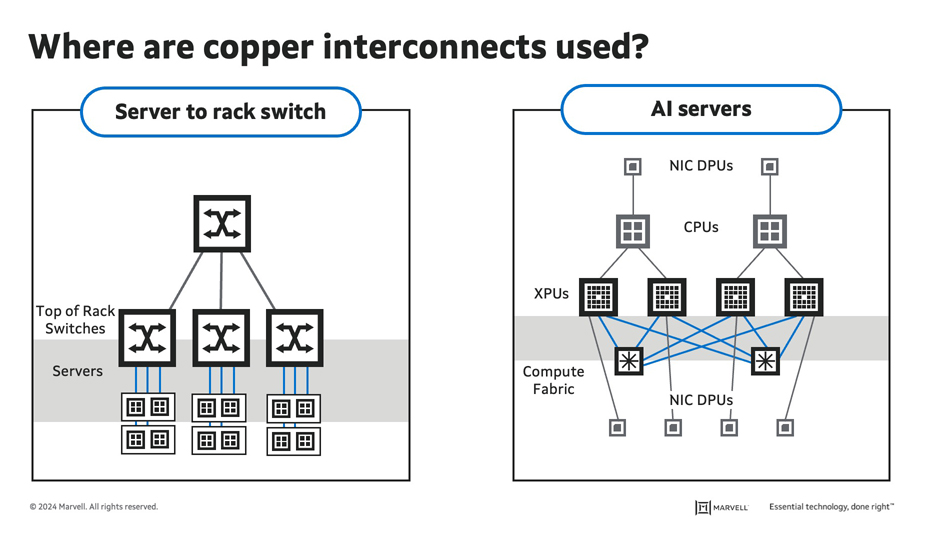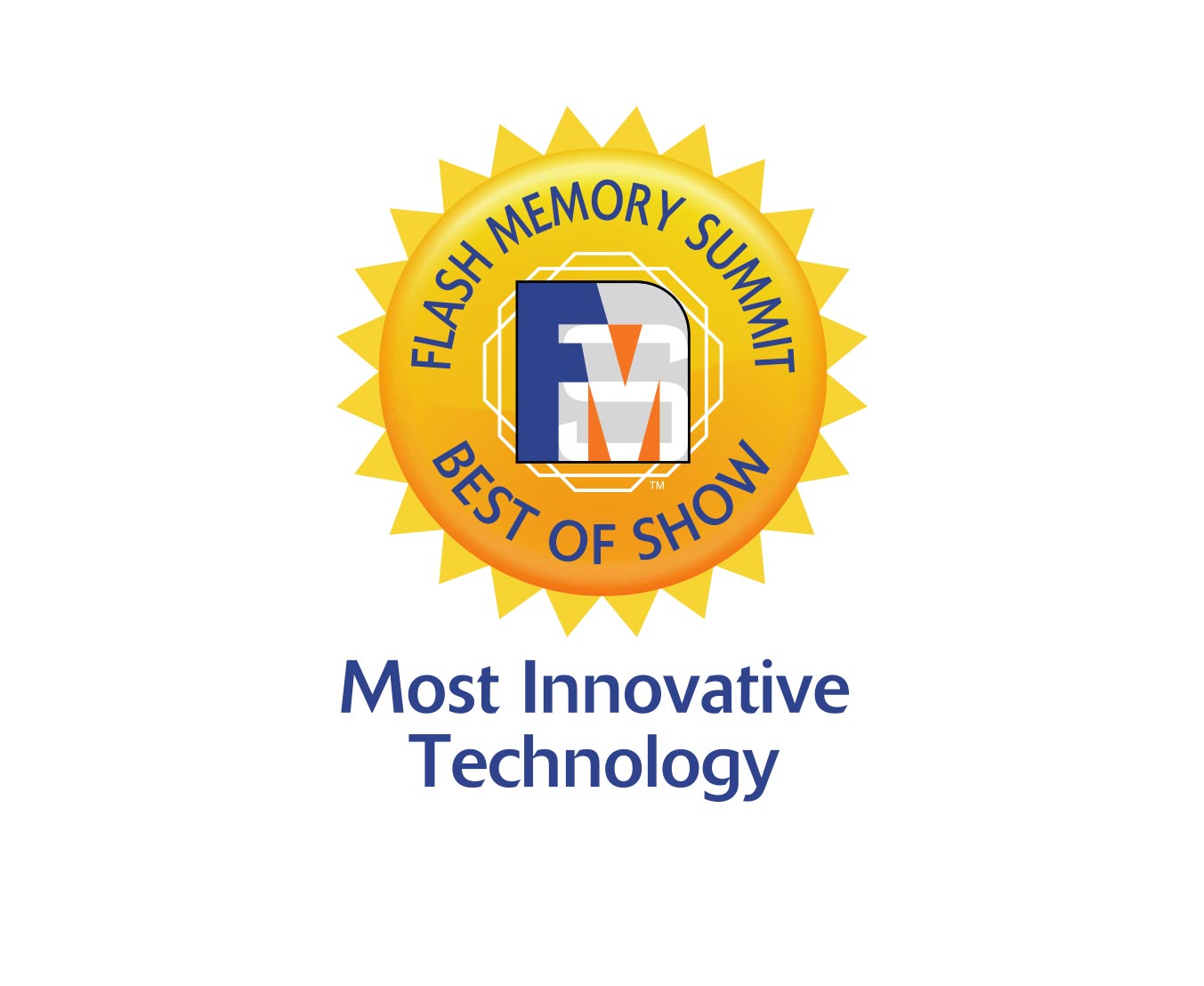- PRODUCTS
- COMPANY
- SUPPORT
- PRODUCTS
- BY TYPE
- BY MARKET
Compute
Networking
- Automotive
- Coherent DSP
- Data Center Switches
- DCI Optical Modules
- Enterprise Switches
- Ethernet Controllers
- Ethernet PHYs
- Linear Driver
- PAM DSP
- PCIe Retimers
- Transimpedance Amplifiers
Storage
Custom
- COMPANY
Our Company
Media
Contact
- SUPPORT
Posts Tagged 'pcie'
-
Nine Things to Remember About the Future of Copper in Computing
By Michael Kanellos, Head of Influencer Relations, Marvell and Vienna Alexander, Marketing Content Intern, Marvell
Is copper dead?
Not by a long shot. Copper technology, however, will undergo a dramatic transformation over the next several years. Here’s a guide.
1. Copper is the Goldilocks Metal
Copper has been a staple ingredient for interconnects since the days of Colossus and ENIAC. It is a superior conductor, costs far less than gold or silver and offers relatively low resistance. Copper also replaced aluminum for connecting transistors inside of chips in the late 90s because its 40% lower resistance improved performance by 15%1.
Copper is also simple, reliable and hearty. Interconnects are essentially wires. By contrast, optical interconnects require a host of components such as optical DSPs, transimpedance amplifiers and lasers.
“The first rule in optical technology is ‘Whatever you can do in copper, do in copper,’” says Dr. Loi Nguyen, EVP of optical technology at Marvell.
2. But It’s Still a Metal
Nonetheless, electrical resistance exists. As bandwidth and network speeds increase, so do heat and power consumption. Additionally, increasing bandwidth reduces the reach, so doubling the data rate reduces distance by roughly 30–50% (see below).
As a result, optical technologies have replaced copper in interconnects five meters or longer in data centers and telecommunication networks.

Source: Marvell
-
Flash Memory Summit Names Marvell a 2020 Best of Show Award Winner
By Lindsey Moore, Marketing Coordinator, Marvell

Flash Memory Summit, the industry's largest trade show dedicated to flash memory and solid-state storage technology, presented its 2020 Best of Show Awards yesterday in a virtual ceremony. Marvell, alongside Hewlett Packard Enterprise (HPE), was named a winner for "Most Innovative Flash Memory Technology" in the controller/system category for the Marvell NVMe RAID accelerator in the HPE OS Boot Device.
Last month, Marvell introduced the industry’s first native NVMe RAID 1 accelerator, a state-of-the-art technology for virtualized, multi-tenant cloud and enterprise data center environments which demand optimized reliability, efficiency, and performance. HPE is the first of Marvell's partners to support the new accelerator in the HPE NS204i-p NVMe OS Boot Device offered on select HPE ProLiant servers and HPE Apollo systems. The solution lowers data center total cost of ownership (TCO) by offloading RAID 1 processing from costly and precious server CPU resources, maximizing application processing performance.
-
Unleashing a Better Gaming Experience with NVMe RAID
By Shahar Noy, Senior Director, Product Marketing
You are an avid gamer. You spend countless hours in forums to decide between the ASUS TUF components and researching Radeon RX 500 or GeForce RTX 20, to ensure games would show at their best on your hard-earned PC gaming rig. You made your selection and can’t stop bragging about your system’s ray tracing capabilities and how realistic is the “Forza Motorsport 7” view from your McLaren F1 GT cockpit when you drive through the legendary Le Mans circuit at dusk. You are very proud of your machine and the year 2020 is turning out to be good: Microsoft finally launched the gorgeous looking “Flight Simulator 2020,” and CD Projekt just announced that the beloved and award-winning “The Witcher 3” is about to get an upgrade to take advantage of the myriad of hardware updates available to serious gamers like you. You have your dream system in hand and life can’t be better.
Recent Posts
Archives
Categories
- 5G (12)
- AI (21)
- Automotive (26)
- Cloud (9)
- Coherent DSP (5)
- Company News (101)
- Custom Silicon Solutions (2)
- Data Center (44)
- Data Processing Units (22)
- Enterprise (25)
- ESG (6)
- Ethernet Adapters and Controllers (12)
- Ethernet PHYs (4)
- Ethernet Switching (36)
- Fibre Channel (10)
- Marvell Government Solutions (2)
- Networking (33)
- Optical Modules (12)
- Security (6)
- Server Connectivity (23)
- SSD Controllers (6)
- Storage (22)
- Storage Accelerators (2)
- What Makes Marvell (32)
Copyright © 2024 Marvell, All rights reserved.
- Terms of Use
- Privacy Policy
- Contact

